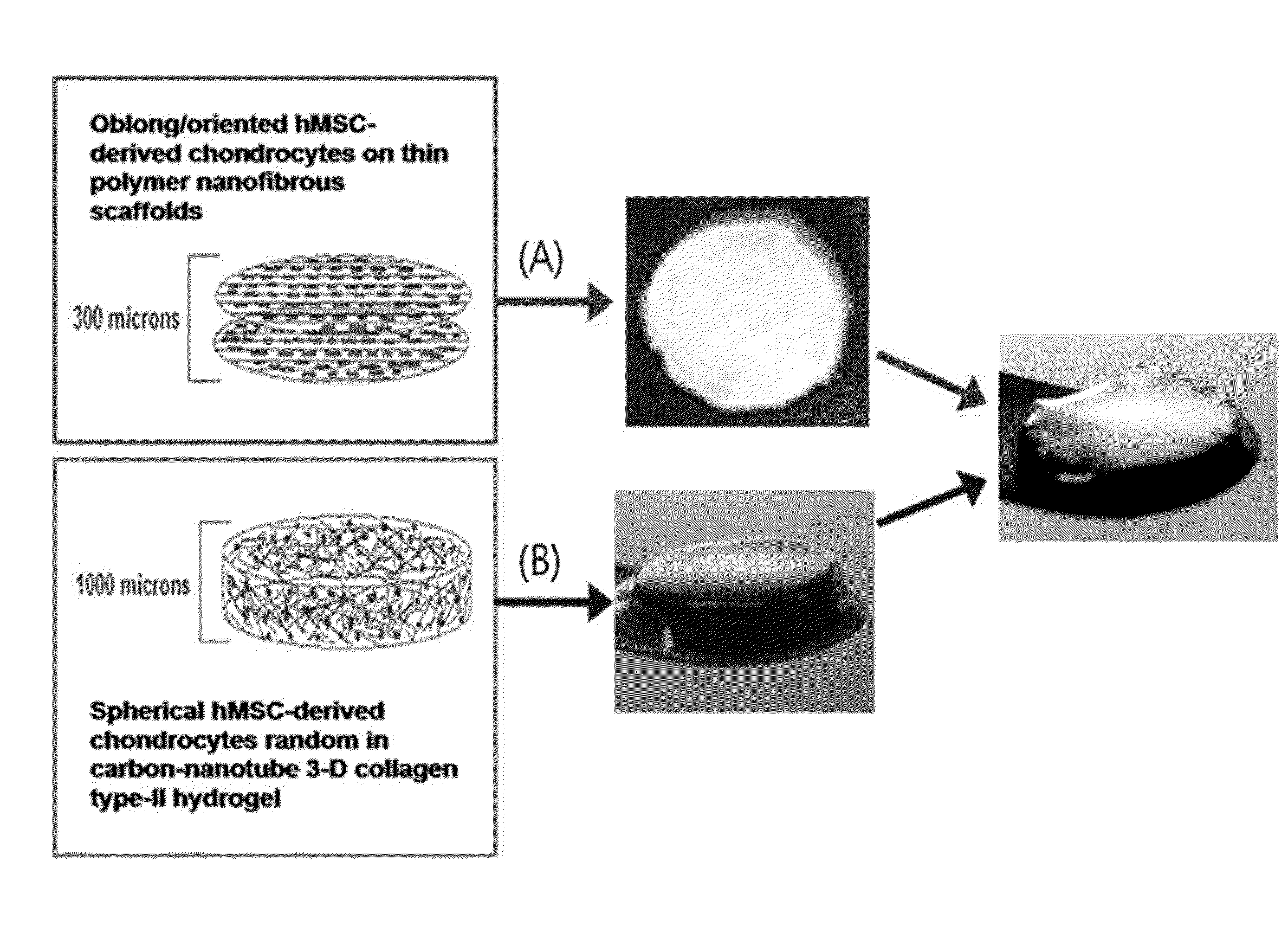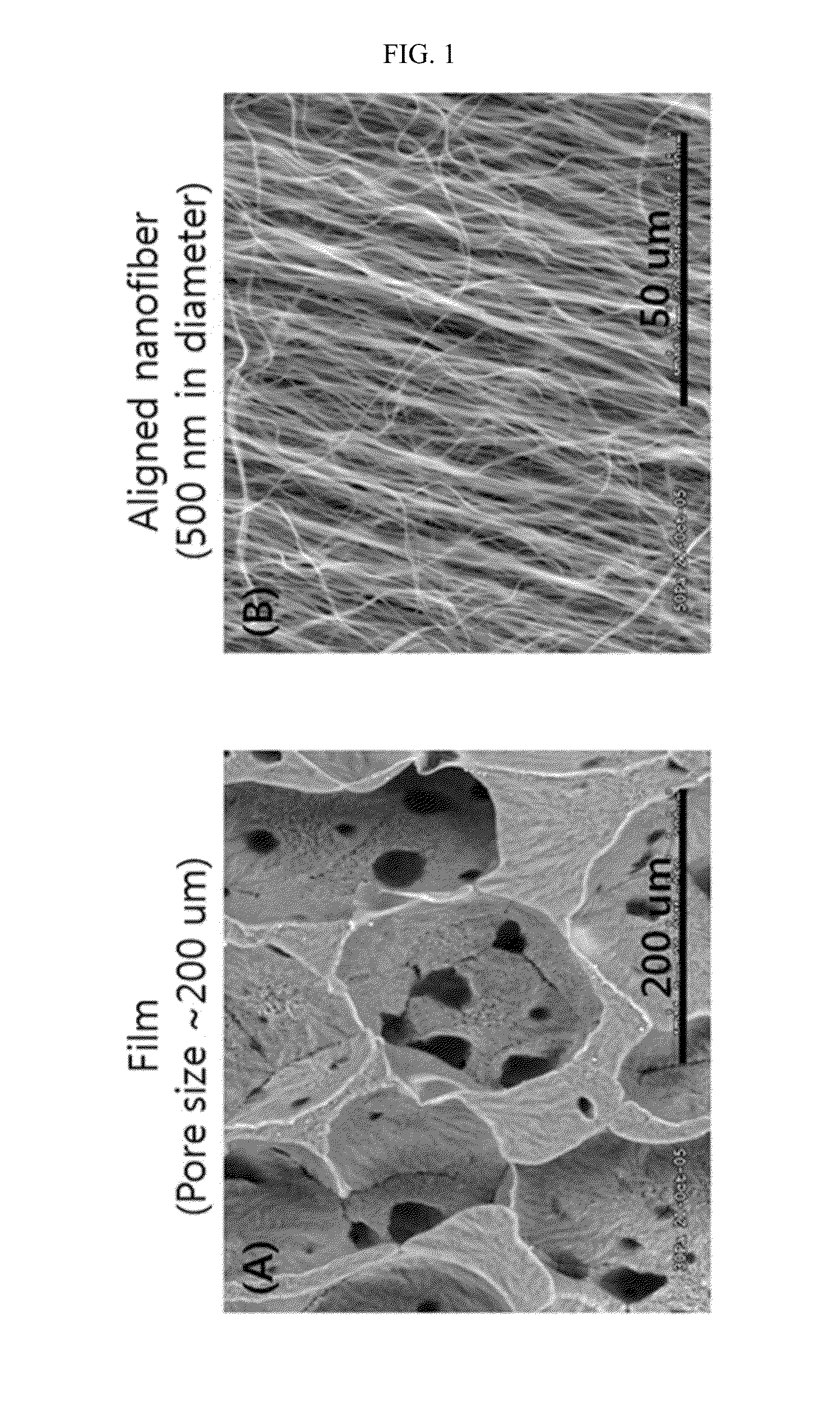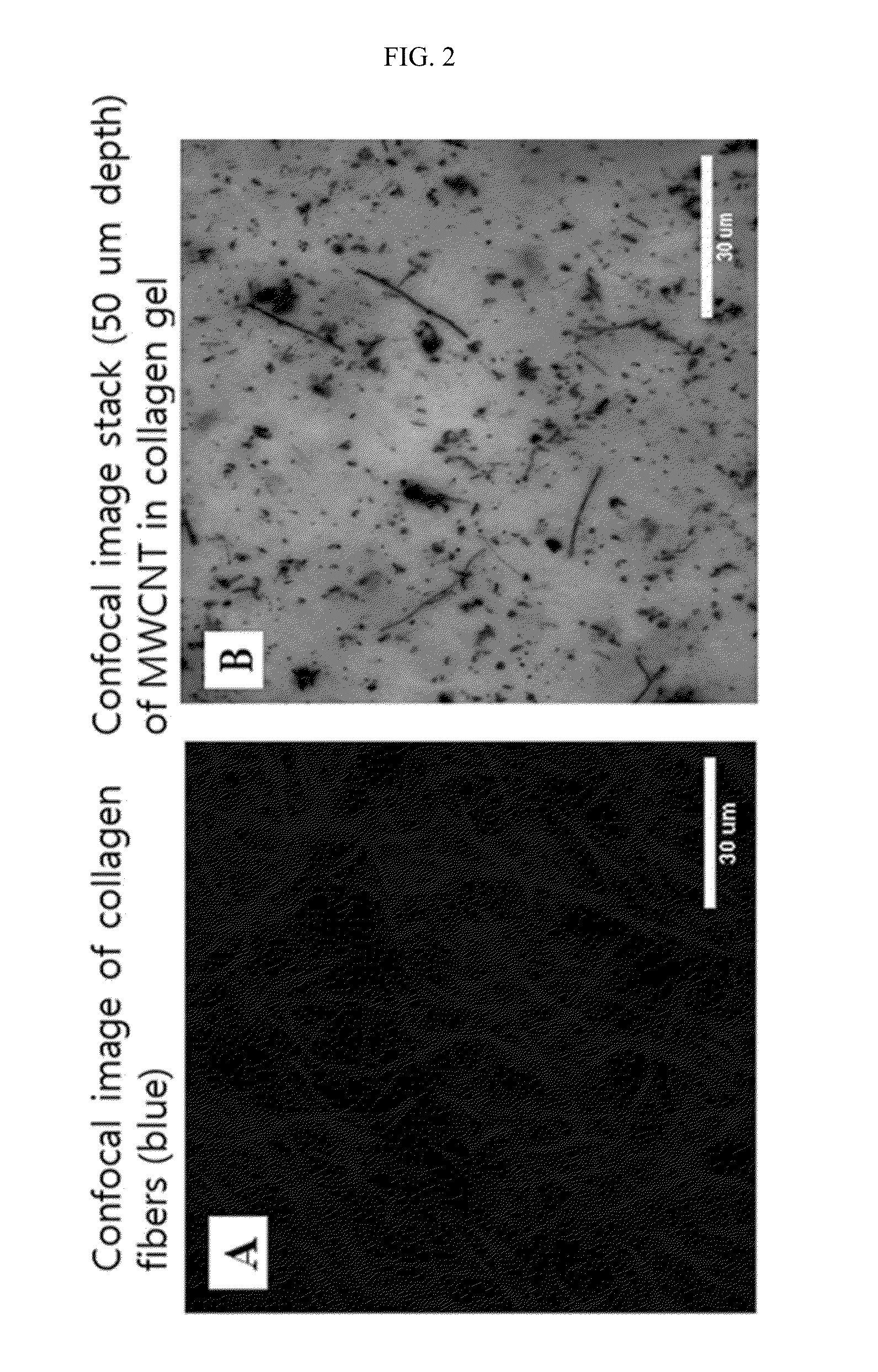Scaffold for articular cartilage regeneration and method for manufacturing same
- Summary
- Abstract
- Description
- Claims
- Application Information
AI Technical Summary
Benefits of technology
Problems solved by technology
Method used
Image
Examples
example 2
Preparation of Collagen Gel Composed of Multiwalled Carbon Nanotube-Incorporated 3-D Collagen Type II-Based Hydrogel Seeded with Human Mesenchymal Stem Cells
[0065]1. Multiwalled Carbon Nanotubes (MWCNT)-PBS Solution
[0066]To a mixture of 15 mL of sulfuric acid and 5 mL of nitric acid, 50 mg of MWCNT [240˜500 nm in outer diameter, 5˜40 ∥m in length, 95+% in purity, manufactured by catalytic chemical vapor deposition (CVD), Nanostructured and Amorphous Materials Inc.] was added, and the solution was ultrasonicated for 1 hr at 50° C. in an ultrasonication water bath, and neutralized with ammonium hydroxide. The MWCNT was collected as pellets by centrifugation for 10 min at 5,000 rpm, and the supernatant was removed. The pellets were washed four times with sterile water, ultrasonicated for 15 min, and centrifuged. After removal of the supernatant containing residual solvents, and undesired amorphous carbon, the MWCNT was resuspended and dispersed in 4 mL of phosphate buffered saline (PB...
example 3
Preparation of Composite Scaffold Composed of Electrospun PCL Fiber Scaffold / Multiwalled Carbon Nanotube-Incorporated 3-D Collagen Type II-Based Hydrogel
[0074]The multiwalled carbon nanotube-incorporated 3-D collagen type II-based hydrogel prepared in Example 2 was pipetted in an amount of 400 μL onto the electrospun PCL fiber scaffold prepared in Example 1 and applied to the flat bottom of each well of 24-well plates to form 2 mm-thick constructs. Subsequently, they were completely set by incubation at 37° C. for 45 min to afford a bilayer composite scaffold of 2 mm in thickness in which the thin PLC fiber scaffold was firmly incorporated onto one side of the completely solidified 3-D collagen type II-based hydrogel. This composite scaffold was withdrawn from the 24-well plate, transferred into a petri dish filled with sterile water, prior to maintaining hydration with sterile water and AFM analysis. It was incubated at 37° C. for 30 min before AFM (atomic force microscope) analys...
experimental example 1
Physical Strength of 3-D Collagen Type II-Based Hydrogel
[0076]The physical strength of the 3-D collagen type II-based hydrogel was measured by AFM (atomic force microscopy). None of the hydrogel samples analyzed by AFM contained cells.
[0077]The ultrasonicated and multiwalled carbon nanotubes were added directly within 1 mL of the collagen hydrogel with pH of 7.5. For comparison, the control collagen hydrogel, EDC (1-ethyl-3-(3-dimethylaminopropyl)carbodiimide)-crosslinked collagen hydrogel, and multiwalled carbon nanotube-incorporated collagen hydrogel were employed. All samples were adjusted to have a final collagen concentration of 7 mg / mL. Samples were created by pipetting 50 μL of the multiwalled carbon nanotube-incorporated collagen hydrogel preparation onto a glass cover slip, and allowing the gel to set completely by incubating at 37° C. for 30 min. The collagen hydrogel samples were kept hydrated in sterile water prior to AFM analysis. AFM analysis was performed with an Atom...
PUM
| Property | Measurement | Unit |
|---|---|---|
| Temperature | aaaaa | aaaaa |
| Temperature | aaaaa | aaaaa |
| Fraction | aaaaa | aaaaa |
Abstract
Description
Claims
Application Information
 Login to View More
Login to View More - R&D
- Intellectual Property
- Life Sciences
- Materials
- Tech Scout
- Unparalleled Data Quality
- Higher Quality Content
- 60% Fewer Hallucinations
Browse by: Latest US Patents, China's latest patents, Technical Efficacy Thesaurus, Application Domain, Technology Topic, Popular Technical Reports.
© 2025 PatSnap. All rights reserved.Legal|Privacy policy|Modern Slavery Act Transparency Statement|Sitemap|About US| Contact US: help@patsnap.com



